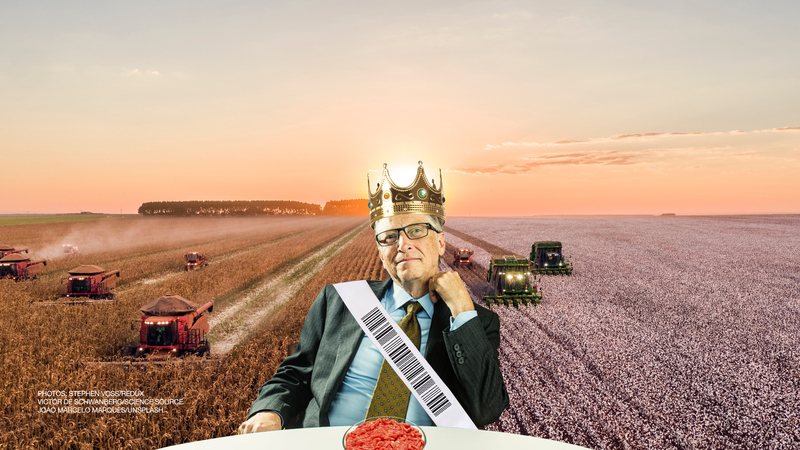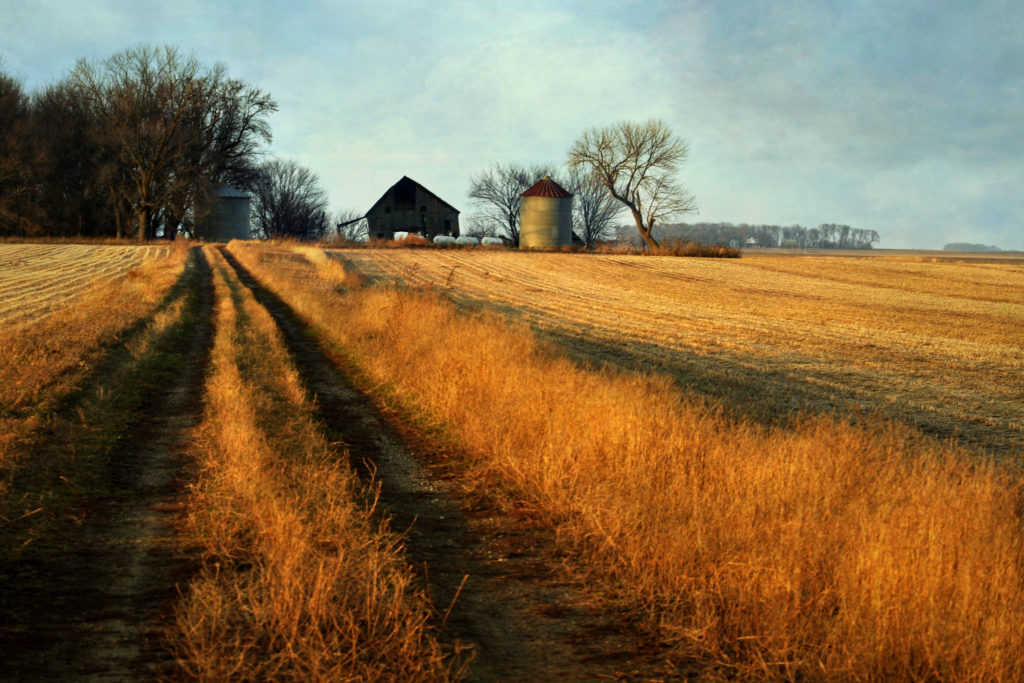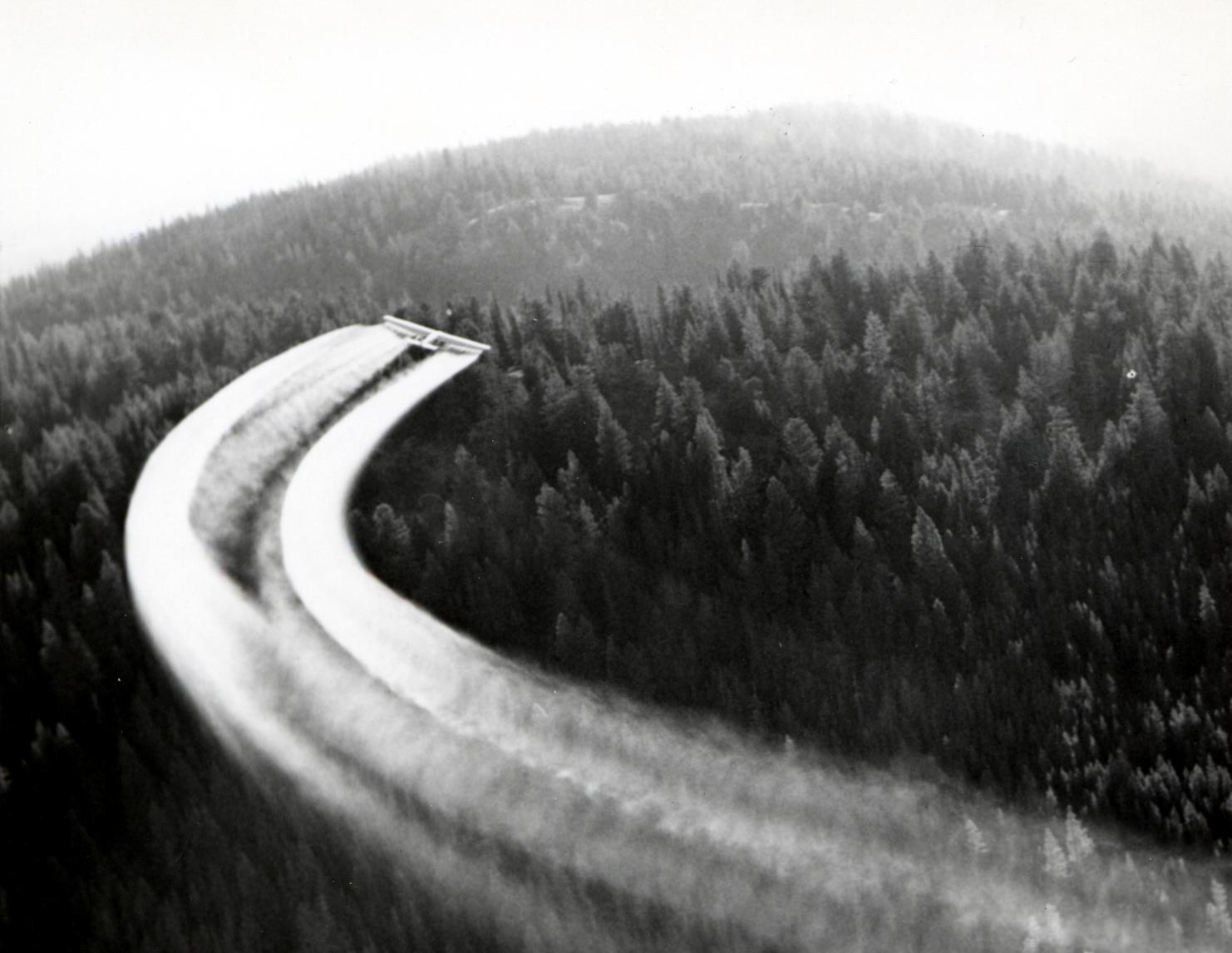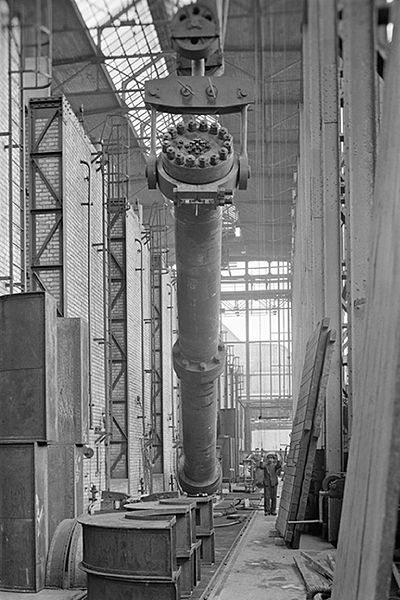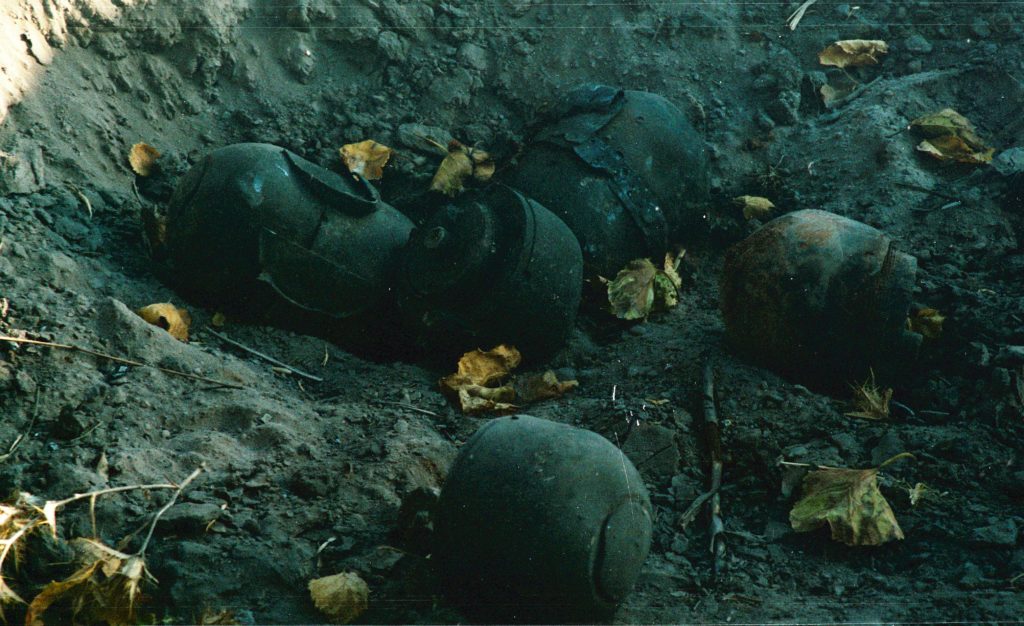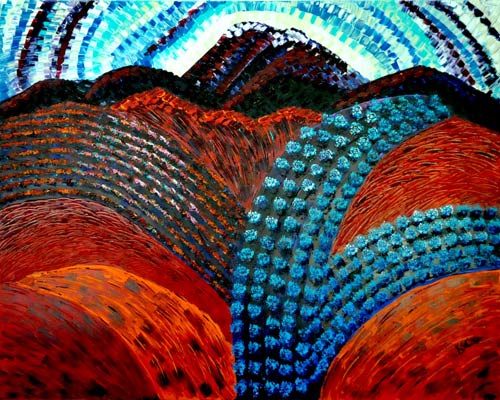by Max Ajl
Debates about the Green New Deal—Ocasio-Cortez’s version and occasionally radical varieties such as that of the US Green Party—have incited much discussion about paths to utopia. Central to these conversations is the labour question: who will do the work of making the world, and how will that work be apportioned? And how much will the US Way of Life © have to change?
Ecologically-minded socialists and degrowthers tend to point out that cheap energy and excess material use are built into the socio-technical structures of capitalism. Getting rid of capitalism requires replacing capitalist technology. We must build, literally, a new world, which may require more labour and much lighter consumption patterns in the core, especially among the wealthy. Eco-socialists also tend to be more attentive to agriculture’s role in development in the periphery and core.
Eco-modernists tend, instead, to focus on eliminating exploitation while maintaining as much as possible of the physical infrastructure and patterns of consumption of capitalism. They imagine machines that will take the place of the current ecologically destructive physical plant, including in the countryside—prototype AI bots to supplant fruit pickers, or non-existent carbon-dioxide-sucking machines in place of restorative agriculture, a proven method of sequestering atmospheric carbon. Very frequently, they imagine a totally post-work world, creating the conditions for a new utopia: Fully Automated Luxury Communism.
Those who hold the latter position often forget that the current distribution of labour is the fruit of a very specific historical moment, marked not merely by a temporary cheapness of energy—and tell Bangladesh, the Seychelles, or your grandchildren that petroleum is cheap—but specific sectoral allocations of labour in farming, industry, and services in the core states.
Geographer Matt Huber, for example, claims that ‘very few actual people/workers are needed to grow the food many of us consume.’ He then deploys this claim—incorrect on its face—to attack those who defend smallholder farming as an active anti-systemic struggle. As he goes on to write, ‘Capitalism has produced the first society where the vast majority need not work in agriculture. A reversal of this is not politically possible or desirable.’
Huber, like many who write in this vein, does not draw a distinction between agriculture in the wealthier and the poorer countries, and does not seem to understand that such geographically-specific food systems are interwoven threads in the fabric of a world system.
The descriptive portion of his statement is true above all in relation to those who work on farms in the wealthier countries, although with important variations among them. When we widen our analytical lens to include those who work on the farms in the periphery that produce much if not most of humanity’s food, including the tropical foods consumed in the core, claims about the disappearance of labour from agriculture collapse.
Labour-intensive agriculture has been and continues to be central to global capitalism.
Labour-intensive agriculture has been and continues to be central to global capitalism. Sugar produced on Caribbean slave plantations supplied cheap calories to the British workforce and large profits to the British ruling class. As Utsa and Prabhat Patnaik show, Britain accrued much of its wealth by siphoning off the bounty of Indian agriculture in jute, opium and spices throughout the colonial period, much as the Netherlands built its affluence on rubber and sugarcane from what was then Java.
Such flows of wealth and value from agriculture to the colonial powers produced systematic famine, and were also the basis for industrialization—a historical process, not a technical model.
These days, of the 12,000 food items on an average supermarket shelf in Western Europe or North America, two-thirds have a total or partial import content from tropical areas. Producing such agricultural goods is labour-intensive. And many of those who work hardest are also the hungriest.
Labour has not been erased from the food chain, but only from some links of the food chain visible in the core states. Contemporary imperialism engineers prices, under- and de-develops the periphery, maintains massive labour reserves, and suppresses wages. As a result, consumers in the core command enough social power that people in other societies must labour to produce our food. Eurocentrism makes such labour invisible.
Where capital has replaced labour in commodity export sectors, the consequences have been disastrous. Land concentrates in the hands of the bourgeoisie, poor people flee to slums, debt-driven suicides mount in India, and the Tunisian semi-proletariat immolates itself. As the poor’s capacity to demand a share of the social product decreases, consumption decreases, and they go hungry. If capitalism has produced a society where some ‘need not work’ in agriculture, it has also produced a society where consumption in the core—such as it is, given widespread malnutrition and obesity—turns on immiseration in the periphery.
If you treat the living as the dead, it should not be surprising when the graveyards spread.
On the ecological front, industrialized agriculture has meant pretending soil and flora are not living entities that require care and attention. If you treat the living as the dead, it should not be surprising when the graveyards spread: topsoil loss, algal blooms amidst fertilizer outflows in the Gulf of Mexico, fields so damaged that they cannot absorb water in the American Midwest, leading to land-gouging floods. Recent reports speak to planet-wide biospheric breakdown, much of it related to the industrialization of agriculture.
Meanwhile, the US’s remaining farmers are killing themselves at a higher rate than war veterans, even while ‘efficient’ labour-light US agriculture only survives by massive subsidies—explicit subsidies from the state in the form of price supports, and implicit subsidies in the form of impossibly cheap energy, for which we know well the consequences.
Labour needs may have decreased on US farms, but this is not a proper way to build a national farming system.
Yet on the basis of (1) the rural-to-urban transformation of the core states; (2) the tiny percentage of the labour force in US agriculture; and (3) the socially-created poverty in peripheral agricultures, Huber claims that ‘we cannot act as if smallholder agriculture is any material basis for a society beyond capitalism.’
I am not sure if Huber is referring to paths to a society beyond capitalism, or if he is drawing up recipes for the cookshops of the future. Whatever the case may be, let me put some facts on the table about the human and social resources available in the present, and their capacity for materially improving the lives of the very poorest among us.
A copious literature makes clear that smallholder agro-ecology in various countries of the former Third World can feed, for example, 12-15 people with one person’s year-round labour on plots of between one and two hectares. In price terms, agro-ecology yields higher economic returns than conventional agriculture, and this with close to 0 percent of global agricultural research and development devoted to improving, rather than merely documenting, its potential. Agro-ecology is carbon-dioxide-absorbing, bio-diversity defending, and resilient in the face of climate change. And there is no question of whether smallholders can feed the world, as they outproduce export-oriented heavily capitalized farms on a per-land-area basis.
There is no question of whether smallholders can feed the world, as they outproduce export-oriented heavily capitalized farms on a per-land-area basis.
Furthermore, productivity per-person and per-hectare can increase (or yearly labour-inputs decrease) through sustained agro-ecological research and practice, a point at odds with those who insists that smallholder farming is a sentence of perpetual drudgery. What the viable alternative could be is always the question left with no good answer.
In the entire peripheral world, smallholder agriculture is the basis for resistance to capitalism: by de-commodifying access to food, by closing off market opportunities for corporate sellers of agro-industrial inputs, by reclaiming land from export-oriented commodity crop production and giving it to poor people for accumulation from below, by increasing the embeddedness of national agricultural systems, and by creating larger internal markets that can form the basis of a sovereign industrialization. Such an industrialization would necessarily rely more on nationally-sourced inputs, preferably renewable ones where possible—for example, there is simply no good socio-ecological reason to rely so heavily on metal and plastic furniture when wood does the job just as well, with far lower CO2 costs and without ripping into the earth.
In terms of political feasibility, we know from the work of Ricardo Jacobs that slum-dwellers in South Africa are interested in a return to agriculture, while Brazilian agrarian reform settlements include former slum-dwellers.
Huber and others claim that smallholder life involves coercion, so relying on smallholders to feed the world would involve even greater coercion. However, the issue is not forcing smallholder peasants to feed urban people, but for economies in the poorer countries to figure out how to balance agricultural and non-agricultural labour while moving away from dominant agro-export models that have produced a planet of slums. Such models put enormous pressure on the lives of smallholders, whether through insufficient credit, lack of tenancy guarantees, or compelled industrialization while input prices are kept out of reach. It is these models that are part-and-parcel of the ‘debt and manifold threats’ to the livelihoods of peasants that Huber decries. It is capitalism in the countryside, and not farming itself, that keeps smallholders poor.
The challenge is equally to allow countries in the periphery to carry out massive internal agrarian reforms, which would help improve the lives of the poor in the city and countryside alike, and move toward a ‘planet of fields.’ Furthermore, such countries must be able to determine their own developmental paths, free from “humanitarian” proxy armies or the sanctions that are imposed, with silence if not assent from much of the Western left, on countries that carry out radical agrarian programs, like Zimbabwe or Venezuela, until they re-align with US/World Bank agendas.
There is no reason—pragmatic, social, or ecological—to suggest that smallholder farming does not offer the scaffolding for a permanently sustainable and relatively equal world in the periphery.
For that reason, we ought to defend agricultural models for the Third World wherein national lands are devoted to sustainably feeding the domestic population. Does that mean that 6-10 percent of the population in the periphery will be involved in agriculture on a permanent basis? Or will such work be rotated? That is for the people, the ones who will build the future, to decide. What is clear is that getting more lands in the hands of smallholders in peripheral states is currently an extremely live anti-systemic struggle.
I happen to agree with Huber about the thorniness of what used to be called the agrarian question of labour in the core states, and I agree that speaking of smallholder agriculture as the basis for US food consumption and a path beyond capitalism is not as straightforward as it is for the periphery.
However, if we accept what I have argued above, we can summarize it in some basic statements.
One: current ways of replacing labour with capital in the Western countries have ripped apart our socio-ecological capacity to manage the land. Two: current consumption relies on imperialism to feed us food we like to eat. Three: the more peripheral countries re-orient their agricultural sectors to domestic feeding, well-being, and social development, the fewer foods will be available in the wealthier countries. Four: there are no serious models for ecologically sustainable regenerative agricultures that rely on technology as a substitute for human attention. Five: we cannot divorce thinking about a sustainable world from anti-imperialist struggle.
Increasing the percentage of the population in core states involved in farming follows logically from the above points. An increase does not mean 50 percent of the population, and it does not mean that everyone will be involved in farming. A corollary would be ensuring that such work is made as attractive as possible, inviting people to choose it freely, and de-centralizing cultural life and social infrastructure.
A second potential course of action is devoting as much research as possible into lessening the difficulty of the labour involved, through—of course!—technology. In both the core and periphery, how much farming will be mechanized and, more importantly, which tasks should not be mechanized remain open questions. So, too, is the meaning of mechanization, and what kinds of tools can spare labour without excess energy-intensive extraction. How much we can replace hard labour with constant attention through human presence and careful intervention in natural cycles is another open question. There is nothing wrong with stating that we do not have all the answers.
It is worth pointing out that almost no one demands that we mechanize the difficult work of caring for children, the sick, and the elderly, since some realms are a step too far for the solve-everything-through-tech community. Yet the earth—a living community, the physical basis for society, and for children, the sick, the elderly, and in fact everyone to have decent lives—does not receive the same treatment.
I do not think my suggestions are by any means the easiest ones. They will involve some changes in the US way of life, though perhaps fewer than one might imagine. Given the social crises endemic to this way of life, fundamental change is long overdue anyway. I do not have a problem stating the existence of such difficulties, especially since I do not see any other feasible answer to how the US can feed itself if agriculture is to be made into a sustainable sector of human production that does not rely on exploiting other countries.
However, I do not see such a transition as an insurmountable obstacle. I do not see why slitting the throats of chickens in slaughtering plants until one’s hands are riddled with carpal tunnel syndrome from repetitive stress injuries is preferable to work on farms, especially since what was previously agricultural labour is now called food processing, but with far more drudgery and alienation in the work process. Furthermore, mechanization of animal agriculture comes with its own massive and insuperable ecological problems.
In any case, I see no reason to imagine the current menu of choices as a natural phenomenon. Capitalism has structured US society and ordered its value system to de-value farm labour, the land, and the lives of non-humans. Such choices were made historically and can be unmade.
Moreover, there is an immense interest in farming even in the current set-up. Across the US, urban gardens sparkle like emeralds in cities. The Land Institute, Soul Fire Farms, the Savannah Institute, the Iowa Land Trust, and others are building up the facts-on-the-ground for a permanently sustainable US farming system.
To wave around the possibility of technological breakthroughs that can remove labour from the farming process while restoring the health of the land is to hope for a solution from the machine.
To wave around the possibility of technological breakthroughs that can remove labour from the farming process while restoring the health of the land is to hope for a solution from the machine. It very often tacitly authorizes the further destruction of peripheral farming systems, and justifies an attitude of contempt toward those in the US working to build sustainable forms of production—the embryos of a better world in the interstices of the current one. There is nothing realistic in imagining shortcuts where none currently exist.
Max Ajl holds a PhD in Development Sociology from Cornell University and works on the Tunisian national liberation movement and post-colonial development in the Arab world. He is on twitter at @maxajl.
